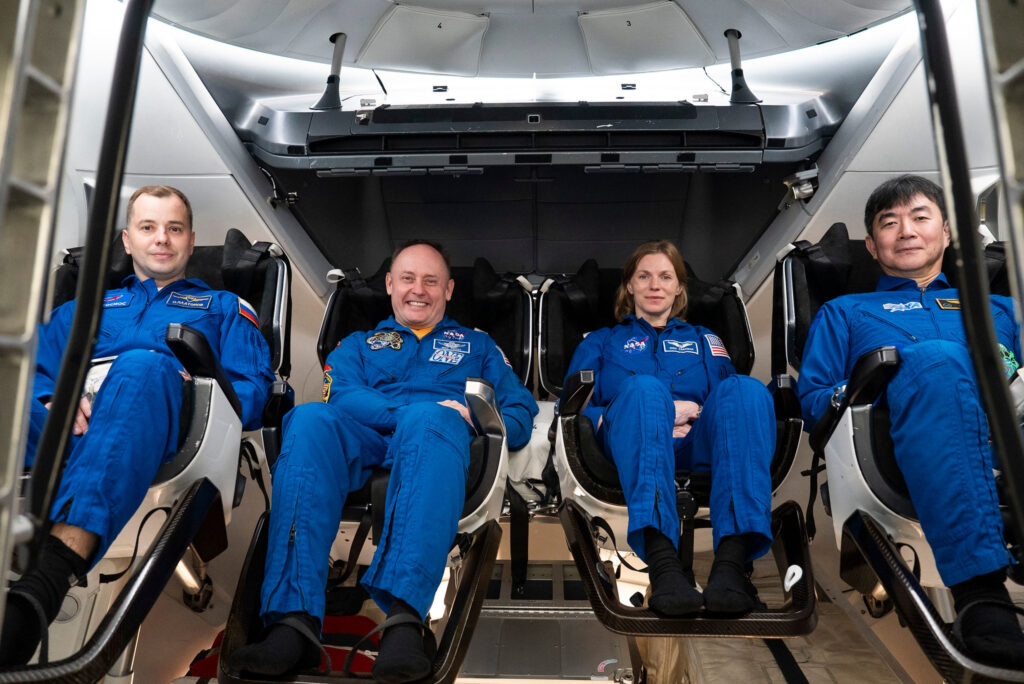The anticipation is building as NASA and SpaceX gear up for the Crew-11 mission to the International Space Station (ISS), set to launch between late July and early August from Kennedy Space Center in Florida. This mission marks the 11th rotational flight under NASA’s Commercial Crew Program, utilizing a SpaceX Falcon 9 rocket and Dragon spacecraft.
Onboard the mission are four astronauts: NASA’s Zena Cardman and Mike Fincke, JAXA’s Kimiya Yui, and Roscosmos’ Oleg Platonov. Cardman will serve as the mission commander, while Fincke takes on the role of pilot. Yui and Platonov will both serve as mission specialists. Notably, this will be the first spaceflight for both Cardman and Platonov, while Fincke embarks on his fourth journey and Yui on his second.
Media Accreditation and Coverage
NASA has opened media accreditation for the Crew-11 launch, inviting journalists to witness this significant event. International media representatives without U.S. citizenship must apply by July 6, while U.S. media and U.S. citizens representing international organizations have until July 14 to submit their applications. All requests must be submitted online through NASA’s media accreditation portal.
For logistical arrangements such as satellite trucks or electrical connections, requests must be made by July 14. For Spanish-language coverage or interviews, media can contact Antonia Jaramillo or Messod Bendayan. Further details and updates about the mission can be accessed on NASA’s official website.
The Crew and Their Mission
The Crew-11 mission is a testament to international collaboration in space exploration. Zena Cardman, a geobiologist and marine scientist, will be making her maiden voyage to space. Her expertise in microbial life and extreme environments is expected to contribute significantly to the scientific objectives of the mission.
Mike Fincke, a veteran astronaut with three previous spaceflights, brings a wealth of experience to the team. His extensive background includes over 381 days in space, making him one of NASA’s most seasoned astronauts.
Kimiya Yui, representing JAXA, is returning to the ISS with a focus on advancing scientific research and international cooperation. Oleg Platonov, a cosmonaut from Roscosmos, will be making his first trip to space, highlighting the ongoing partnership between NASA and Roscosmos.
Scientific Goals and Experiments
The Crew-11 mission will focus on a variety of scientific experiments aimed at enhancing our understanding of life in space. The crew will conduct research in areas such as biotechnology, physical science, and Earth science. These experiments are crucial for future long-duration missions and the eventual goal of human exploration beyond low Earth orbit.
“The International Space Station continues to be a beacon of international cooperation and scientific advancement. Each mission brings us closer to understanding the complexities of space and how we can harness this knowledge for the betterment of life on Earth,” said a NASA spokesperson.
Historical Context and Future Implications
The Crew-11 mission is part of NASA’s broader strategy to maintain a continuous human presence in space. This initiative began with the launch of the first crew to the ISS in 2000 and has since evolved into a robust program supported by international partnerships.
SpaceX, as a key player in NASA’s Commercial Crew Program, has been instrumental in reducing the cost of access to space and increasing the frequency of missions. The success of these missions not only bolsters scientific research but also paves the way for future commercial endeavors in space.
The implications of these missions extend beyond scientific research. They represent a shift towards sustainable space exploration, with the potential to revolutionize industries such as telecommunications, materials science, and even healthcare.
Looking Ahead
As NASA and its partners continue to push the boundaries of space exploration, the Crew-11 mission serves as a reminder of the collaborative spirit that drives these efforts. The knowledge gained from these missions will be crucial as humanity looks towards the Moon, Mars, and beyond.
The success of the Crew-11 mission will not only contribute to the ongoing operations of the ISS but also inspire future generations of scientists, engineers, and explorers. As the launch date approaches, the world watches in anticipation, eager to witness another milestone in the history of space exploration.
